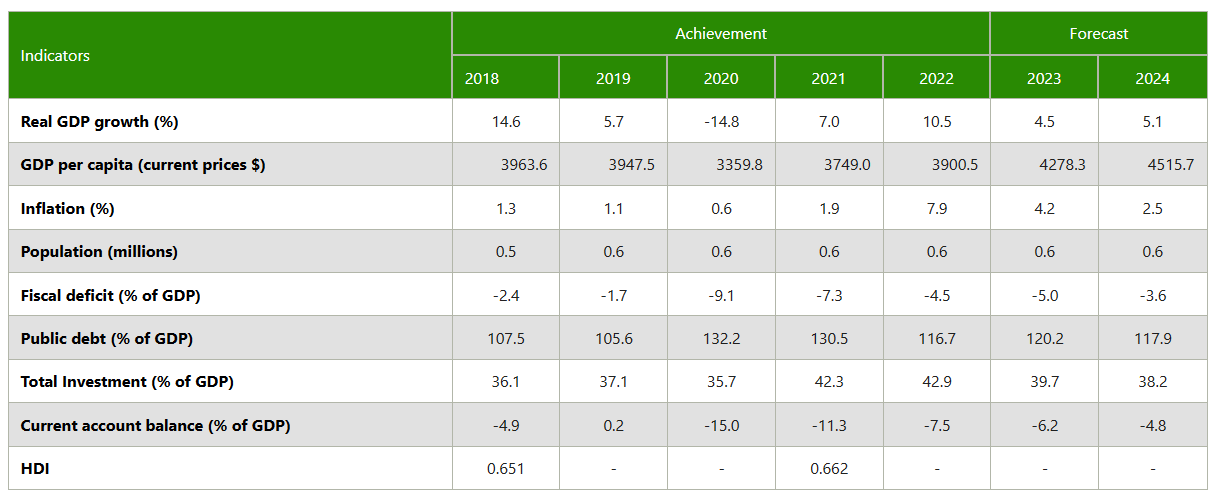 Macroeconomic Performance
Macroeconomic Performance
Table 1: Overview of some macroeconomic indicators
 Cabo Verde recorded an average growth rate of 4.6 per cent over the last five years. The Cabo Verdean economy grew by 10.5 per cent in 2022, up from 7.0 per cent in 2021, as the tourism industry continued to recover from the COVID-19-induced shutdown. Average inflation in Cabo Verde jumped to 7.9 per cent in 2022 from 1.9 per cent in 2021. Fiscal balance improved to -4.5 per cent of GDP, from -7.3 per cent of GDP, while debt-to-GDP declined substantially to 127.4 per cent in 2022, compared with 142.9 per cent in 2021. The current account balance also improved markedly to -7.5 per cent of GDP, compared to -11.3 per cent of GDP in 2021.
Cabo Verde recorded an average growth rate of 4.6 per cent over the last five years. The Cabo Verdean economy grew by 10.5 per cent in 2022, up from 7.0 per cent in 2021, as the tourism industry continued to recover from the COVID-19-induced shutdown. Average inflation in Cabo Verde jumped to 7.9 per cent in 2022 from 1.9 per cent in 2021. Fiscal balance improved to -4.5 per cent of GDP, from -7.3 per cent of GDP, while debt-to-GDP declined substantially to 127.4 per cent in 2022, compared with 142.9 per cent in 2021. The current account balance also improved markedly to -7.5 per cent of GDP, compared to -11.3 per cent of GDP in 2021.
Outlook
GDP growth in Cabo Verde is projected to slow to 4.5 per cent and 5.1 per cent in 2023 and 2024, respectively, as a result of the base effect of the 2022 growth. This growth projection is subject to the tourism sector maintaining its recovery from the ashes of the pandemic. Average inflation is projected to decline to 4.2 per cent and 2.5 per cent in 2023 and 2024, respectively, in line with the decline in inflationary expectations. Fiscal balance is projected to worsen to -5.0 per cent of GDP in 2023, improving to -3.6 per cent of GDP in 2024. In the same vein, public debt is projected to decline to 120.2 per cent of GDP in 2023 and 117.9 per cent of GDP in 2024. The projected recovery of the tourism sector is expected to lead to an improvement in the current account balance, with the current account balance-to-GDP ratio improving to -6.2 per cent in 2023 and -4.8 per cent in 2024.
Probable Headwinds
The biggest hurdle the Cabo Verdean economy faces could be derailing the tourism sector growth by factors that could lead to forced shutdowns or drive prices beyond reasonable levels. High prices will dampen value addition in the tourism sector. The country has experienced a drought over the past five years, which has worsened food inflation. The persistence of this trend will adversely affect agricultural output and increase fears of food insecurity.

